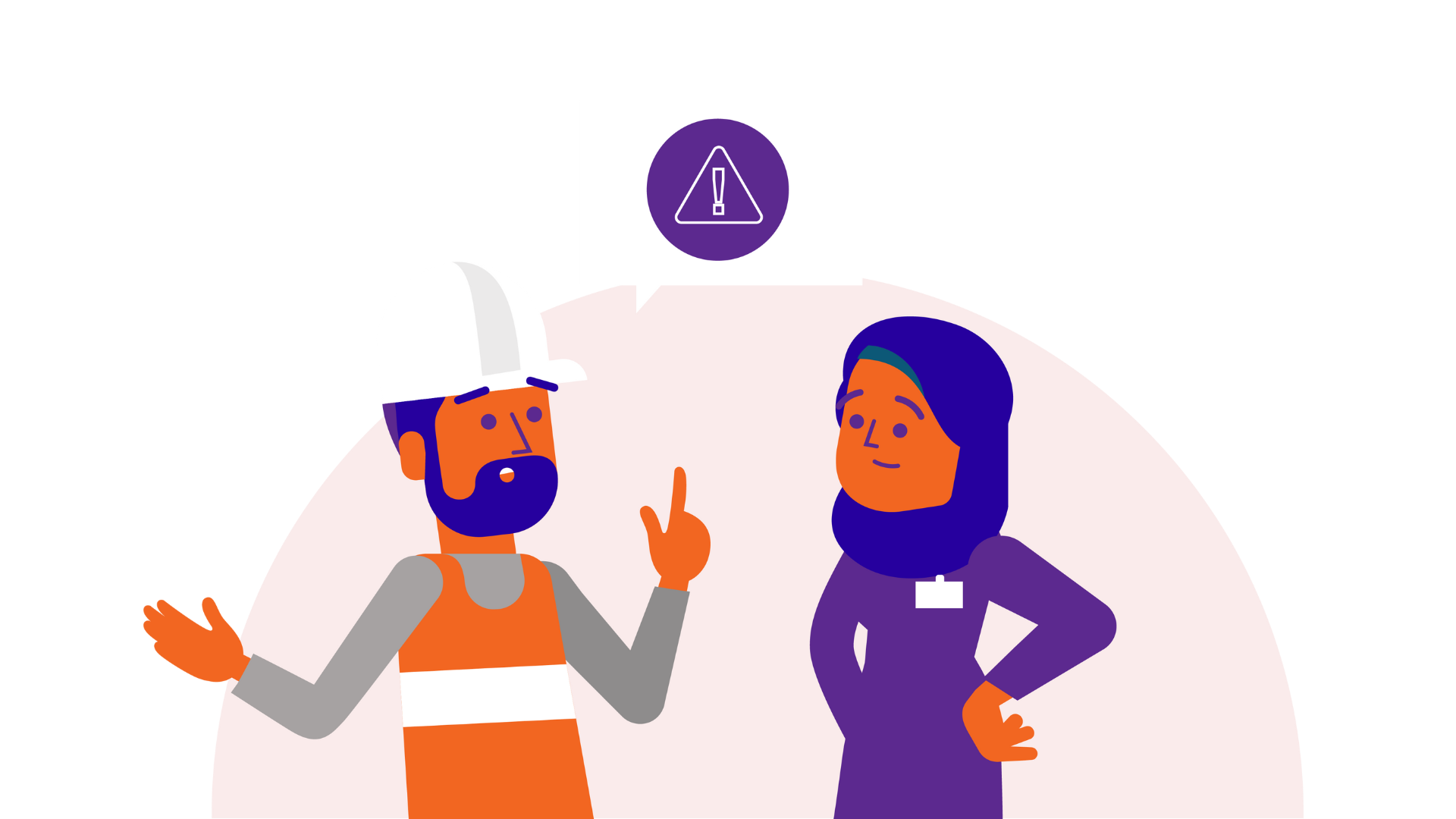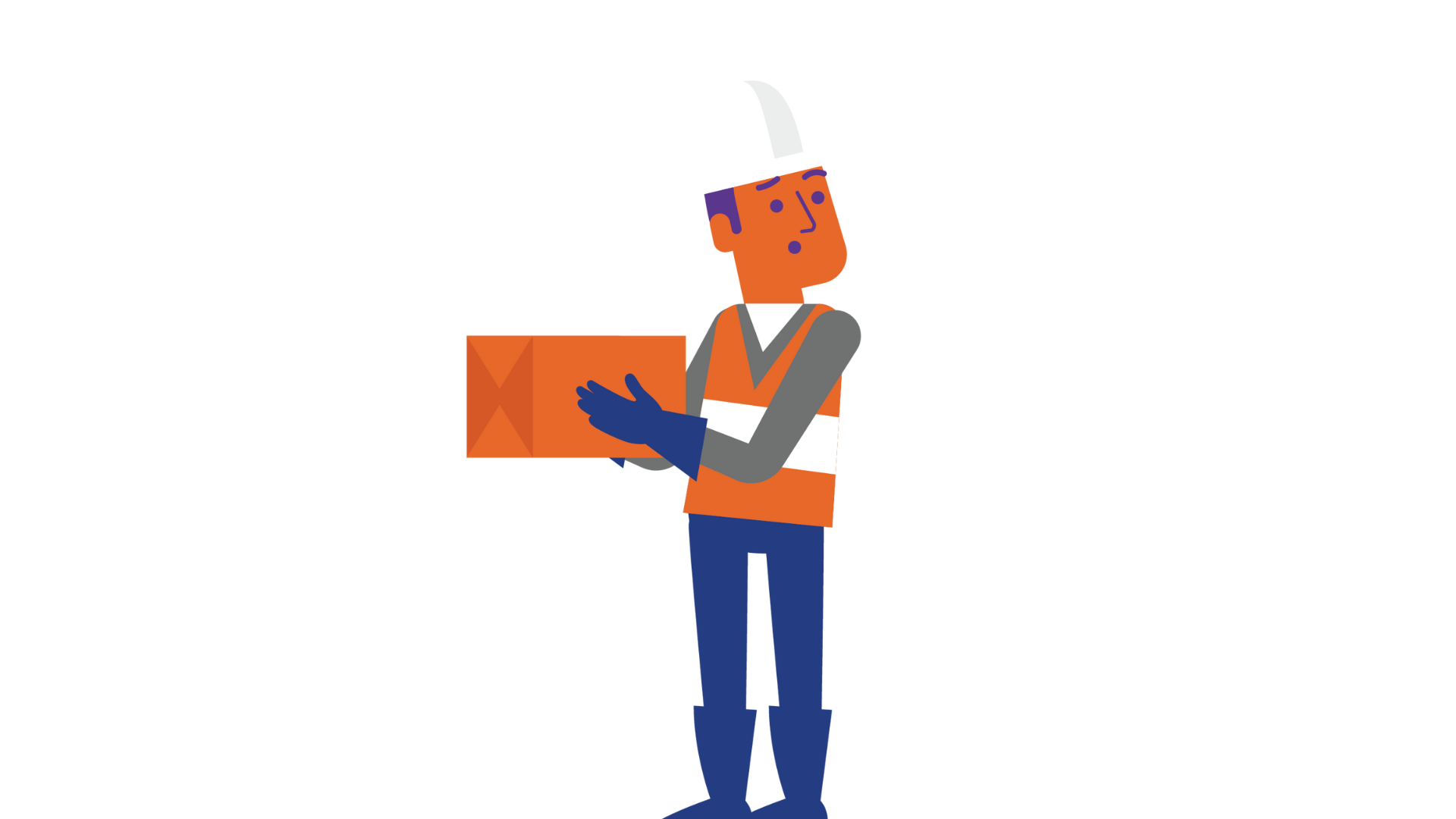
Was on
-
Work
14
August
2024
5 min reading time
The 7 leading causes of accidents you should watch out for
As a temporary worker, you will encounter different work environments, each with its own risks. Safety in the workplace is important, all the more important to know what to look out for to avoid accidents. In this article, we will discuss the 7 main causes of accidents in the workplace so that you are well prepared.
Sign upSign up for the waiting listStay informedAccidents can have a variety of causes. To make sure that you as a temporary worker know what to do to prevent accidents, we have created a list of tips with the help of the National Government's Health and Safety Portal . With these tips, you can ensure that you and your colleagues can work even safer.
- Collision
- Aggression and extreme force exertion
- Contact with objects
- Hazardous atmosphere
- Hazardous substances
- Machinery and tools
- Traps
Collision
Collisions are common when vehicles such as forklifts, trucks or cars are around. Whether you work outside as a road worker or inside a warehouse, the risk always exists. Make sure you are always visible, such as by wearing reflective clothing.
Tips:
- Stay on designated walkways.
- Always use proper safety equipment, such as a helmet or safety vests and safety shoes.
- Make eye contact with drivers before crossing a street or work site.
Aggression and Extreme Force Effort
Working in an environment where aggression can occur, such as from customers, co-workers or even animals, can be dangerous. In addition, lifting or moving heavy items without proper equipment can also lead to injury.
Tips
- Use tools such as forklifts or get a colleague to help you.
- Take breaks to relieve your muscles and avoid overexertion.
- Stay calm in stressful situations and seek help if you face aggression.
Contact with objects
Whether you work in a warehouse, factory or on a construction site, the chances of coming into contact with hazardous objects are high. These can range from sharp edges, hot surfaces, electricity to heavy falling objects.
Tips:
- Always wear protective clothing and equipment, such as gloves, helmets and safety glasses.
- Keep your workspace tidy to avoid tripping and falling.
- Use caution when working with electrical equipment and follow safety instructions.
Hazardous atmosphere
In other words, hazardous air. In some work environments, such as cleaning or chemical work, you may be exposed to hazardous gases or fumes. Working in confined spaces can increase the risk of inhaling hazardous substances.
Tips:
- Wear a mask or respiratory protection when working with hazardous materials.
- Ensure adequate ventilation in confined spaces.
- Be aware of hazards and know emergency procedures in the event of a gas leak or chemical incident.
Hazardous substances
Mishandling hazardous substances can lead to burns, breathing problems or even explosions. It is important to know how to handle these substances.
Tips:
- Always read labels and safety instructions before working with a fabric.
- Use personal protective equipment, such as gloves and safety glasses
- Store hazardous materials according to regulations to prevent accidents.
Machinery and tools
Using machines and tools is often unavoidable, but without proper knowledge and precautions, they can be dangerous. Cuts, entrapments and other injuries are common.
Tips:
- Always follow operating instructions for machines and tools.
- Turn off machines before performing maintenance or cleaning.
- Make sure you are well trained in the use of the tools you use.
Traps
Falls are one of the most common causes of injury in the workplace. This can occur from slipping, tripping or falling from height
Tips:
- Provide a tidy and well-lit workplace.
- Use fall protection when working at heights, such as harnesses or safety nets.
- Wear shoes with non-slip soles to prevent slipping.
Sign up for free
Stay informed
Stay informed
Getting Started
Ready to work on yourself, your future or your job prospects?
Find out within 1 minute which budget is best for you.

Grow in your work and increase your job opportunities.










.png)

.avif)
